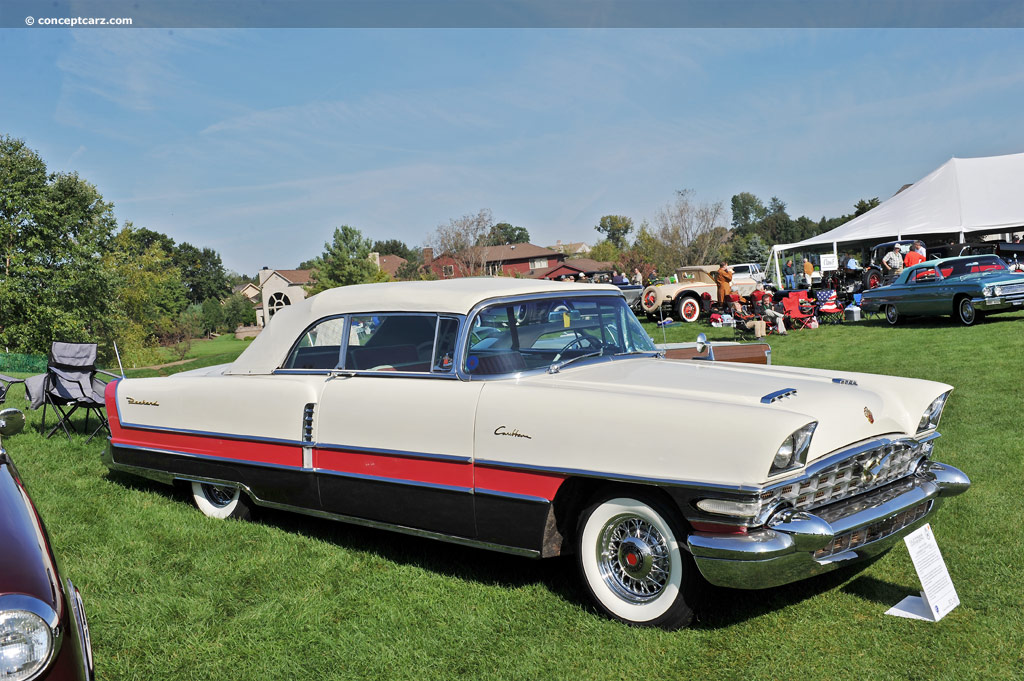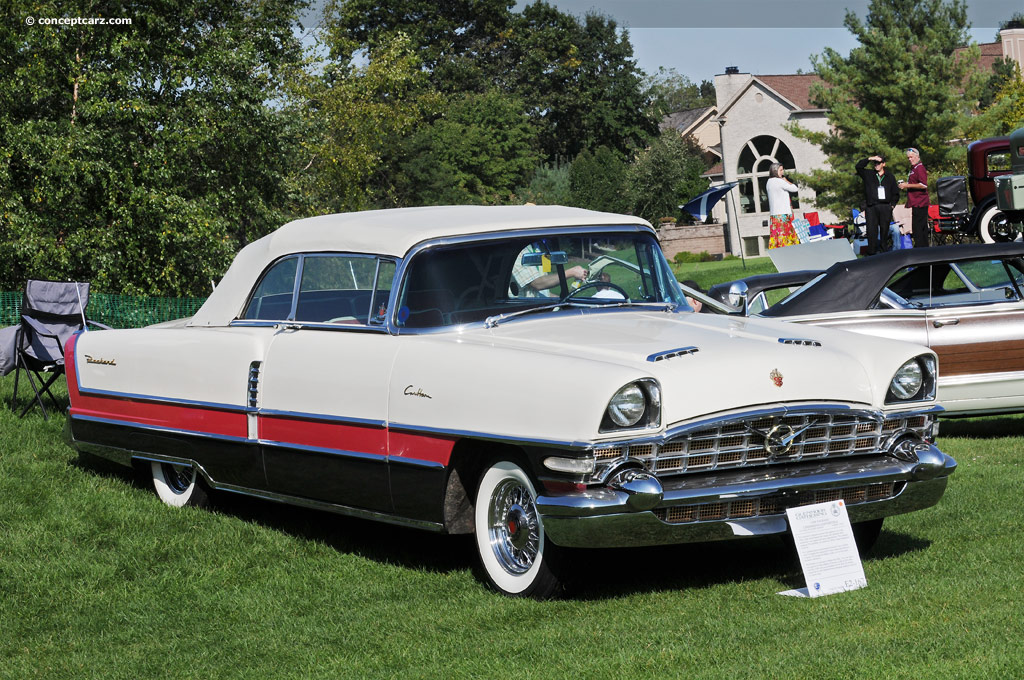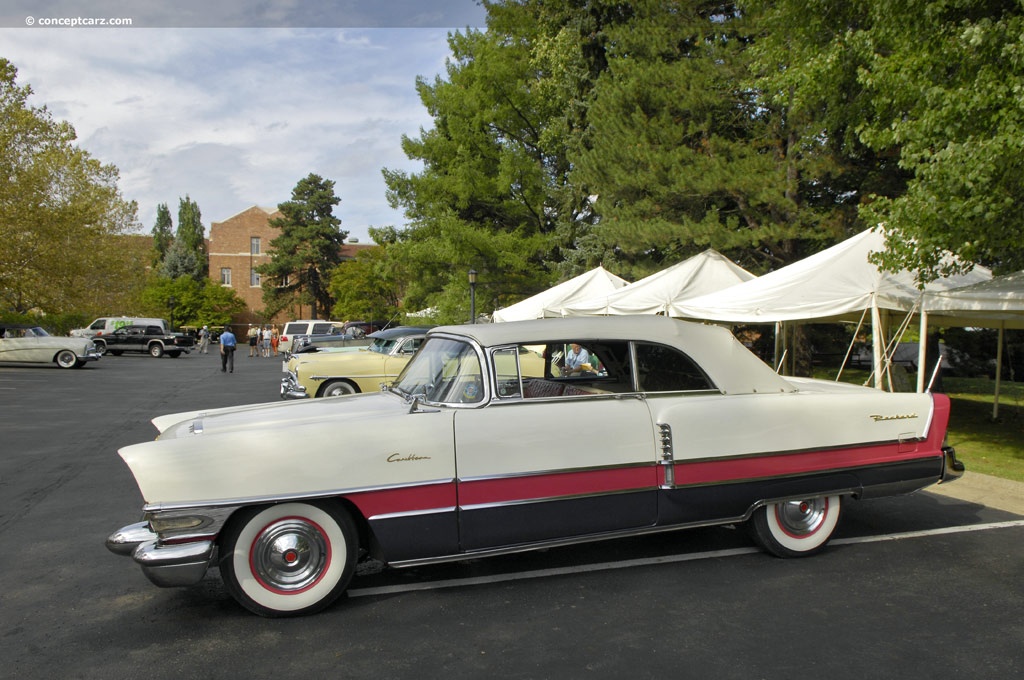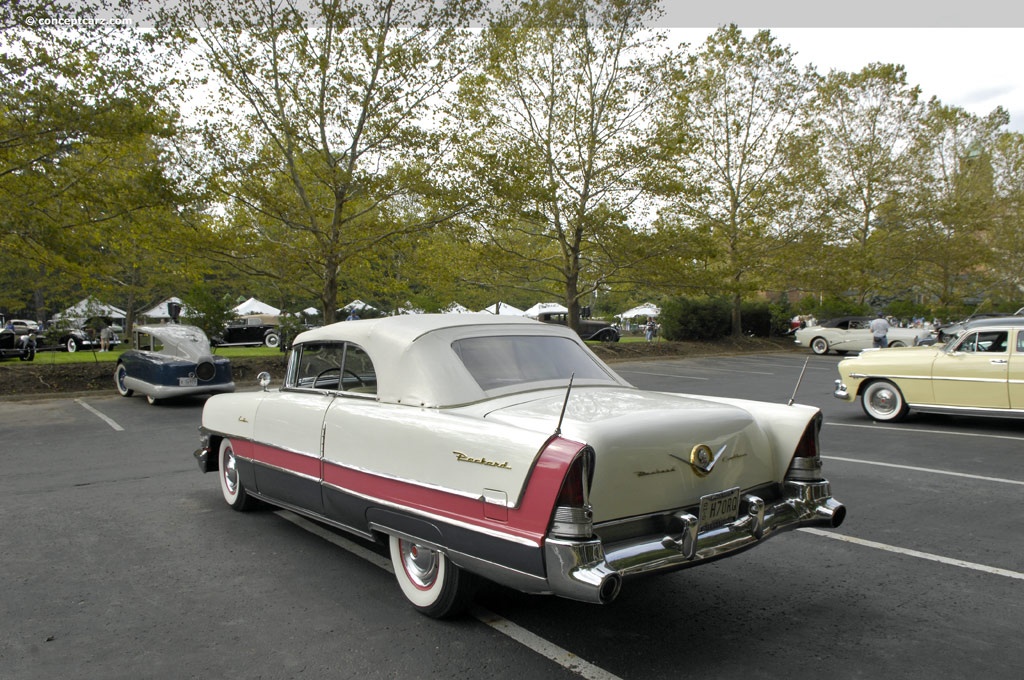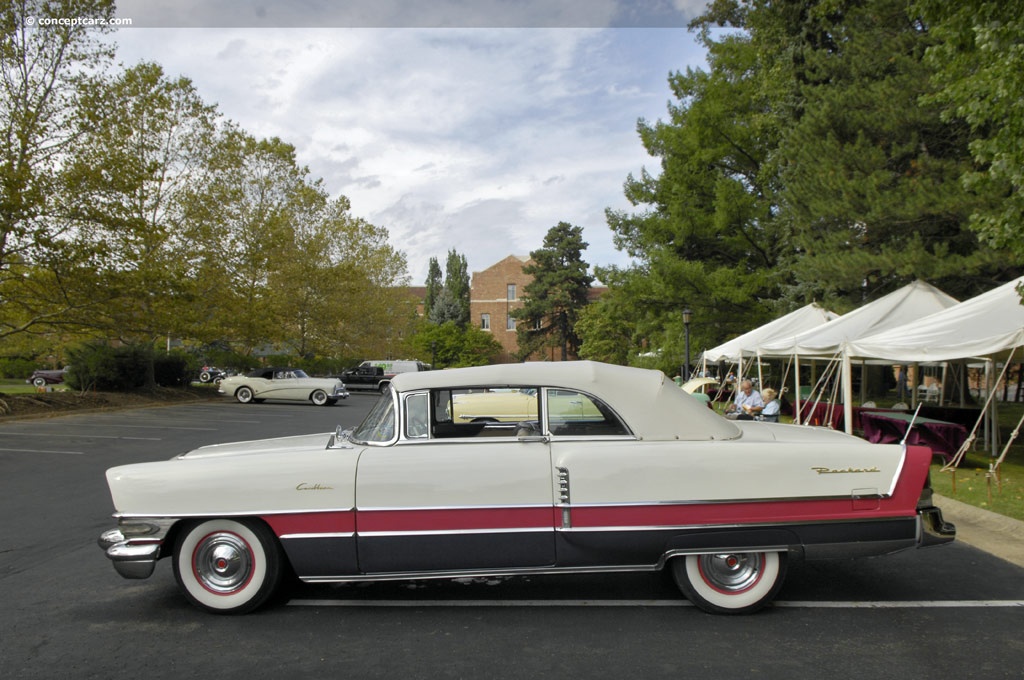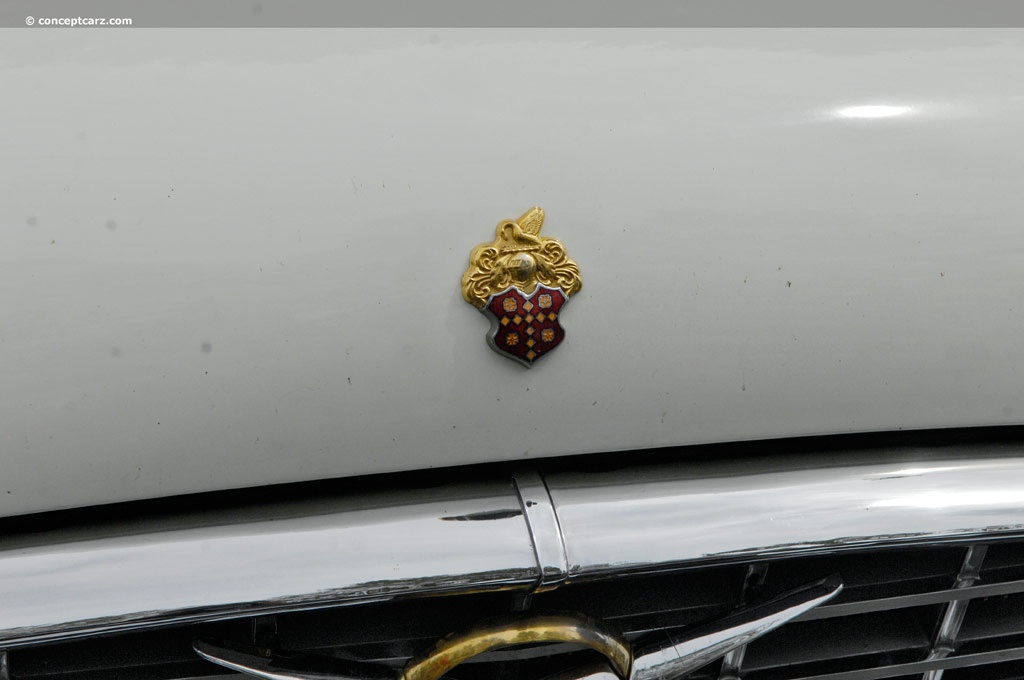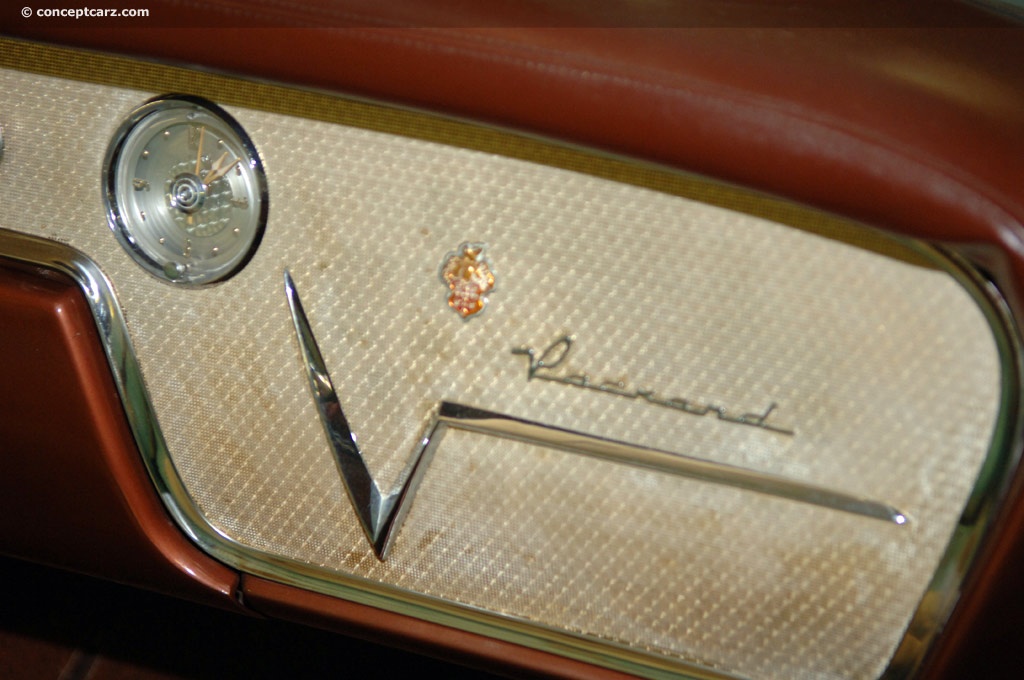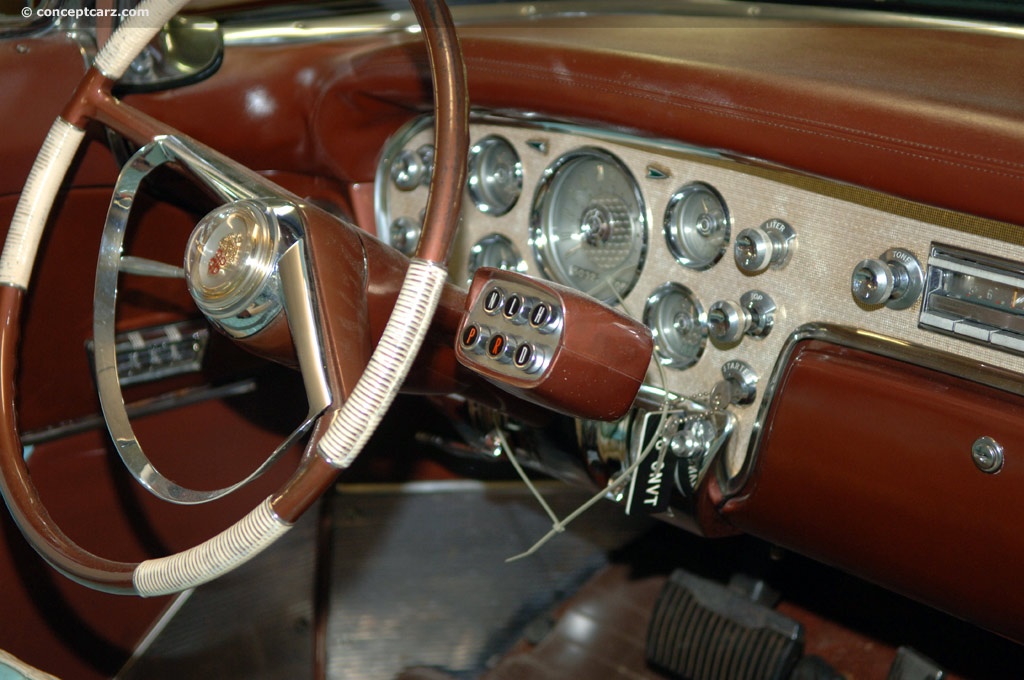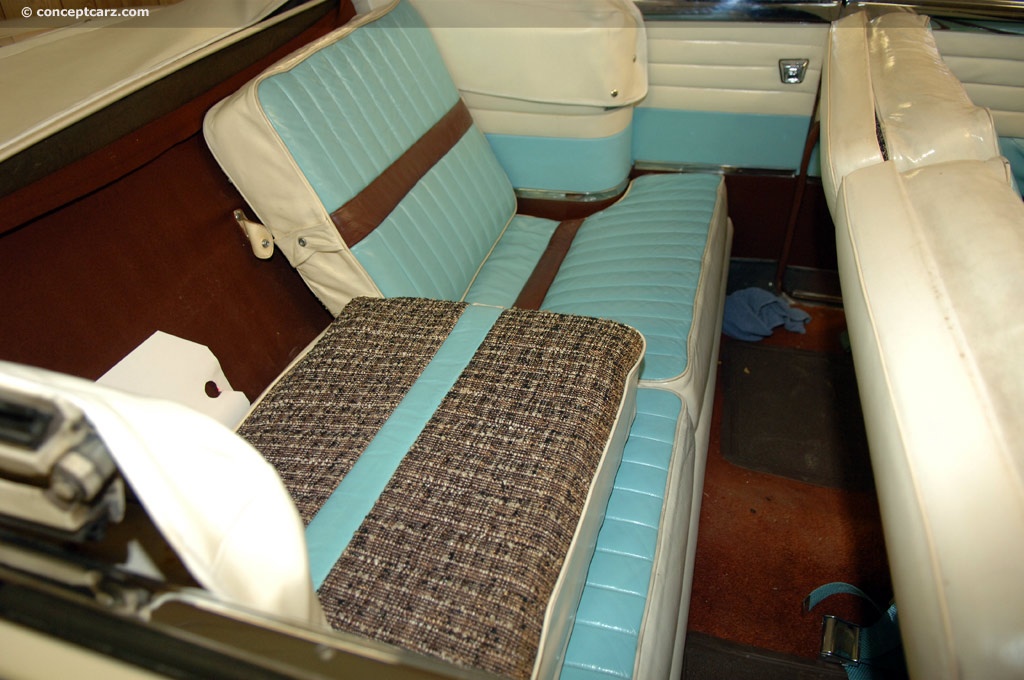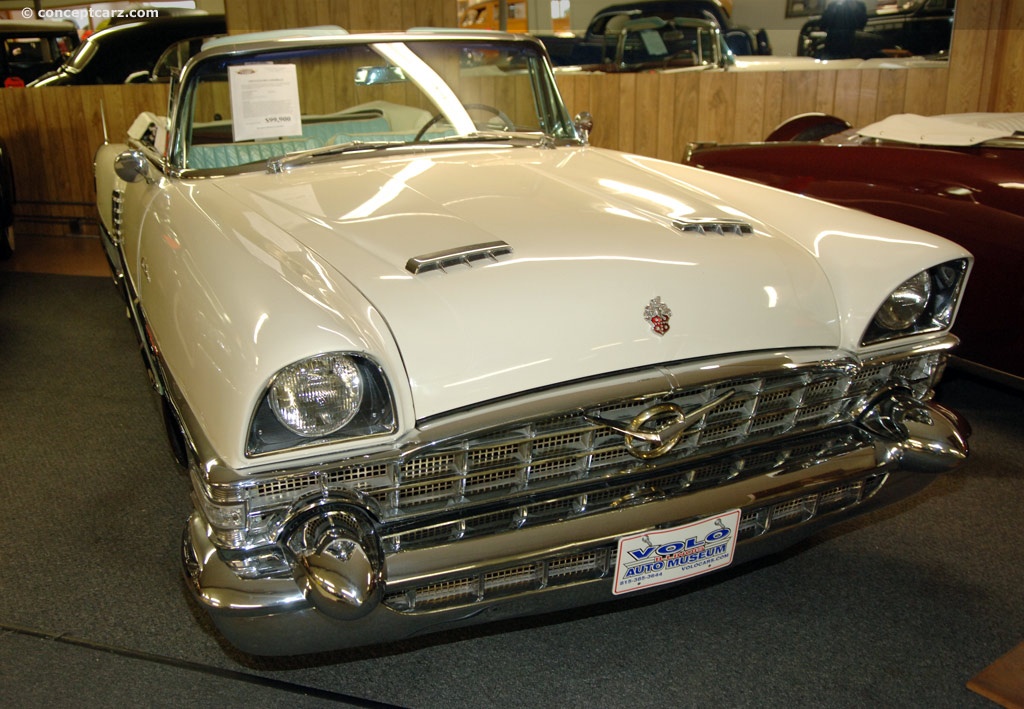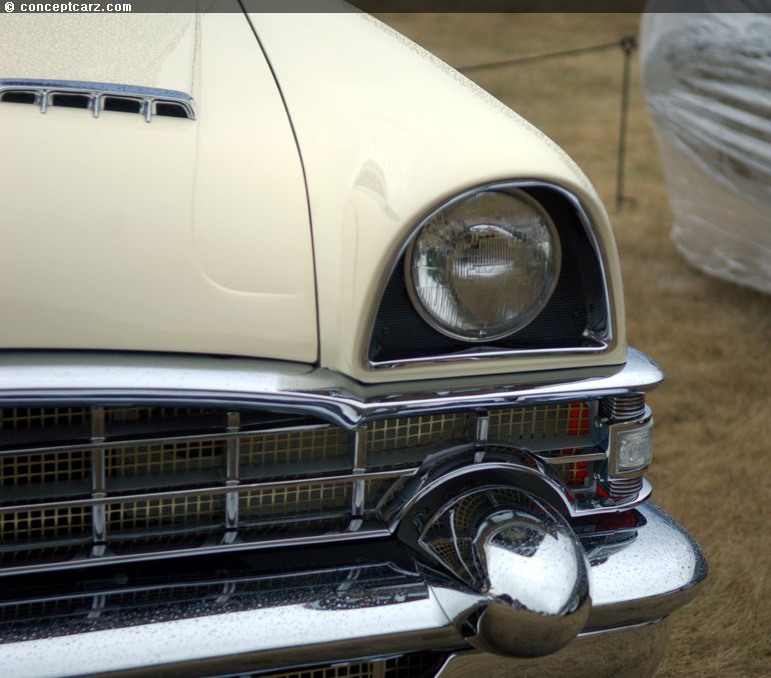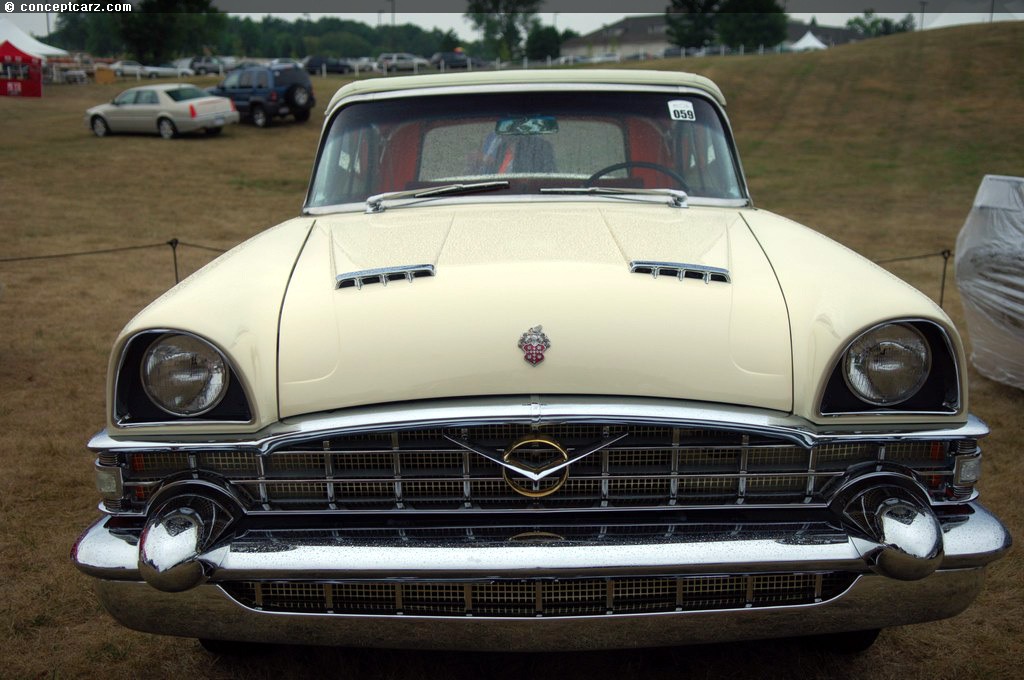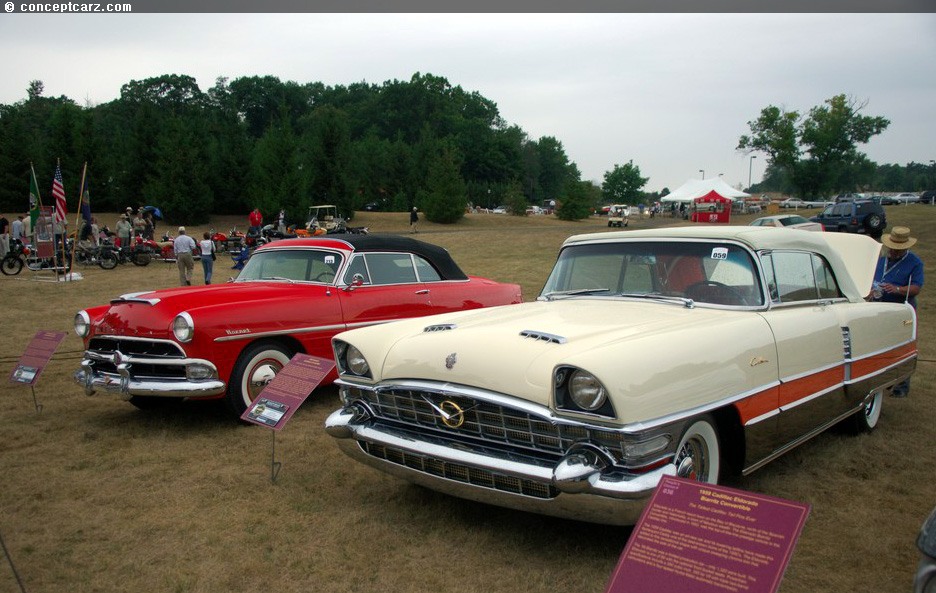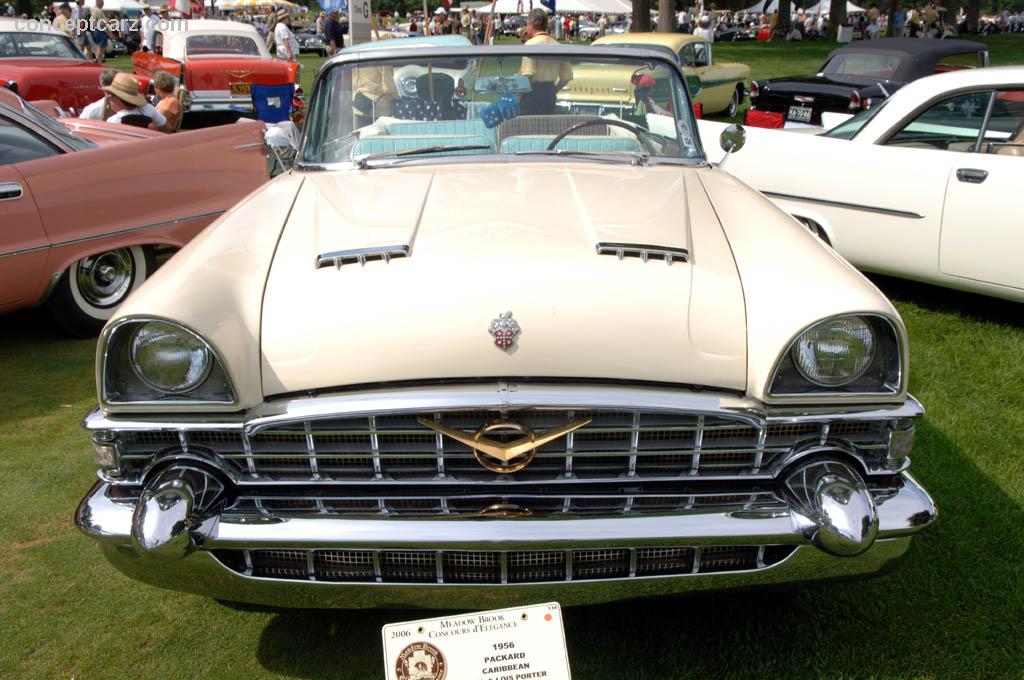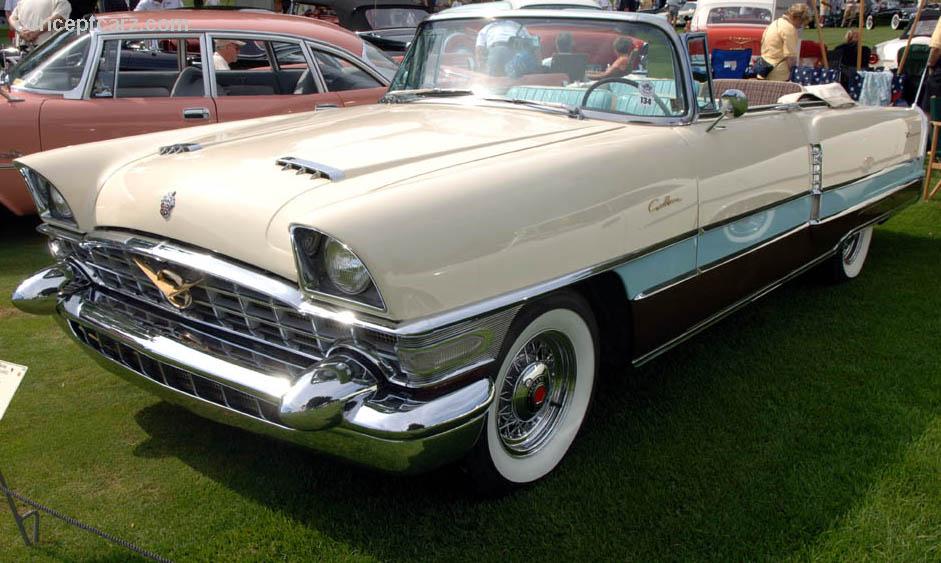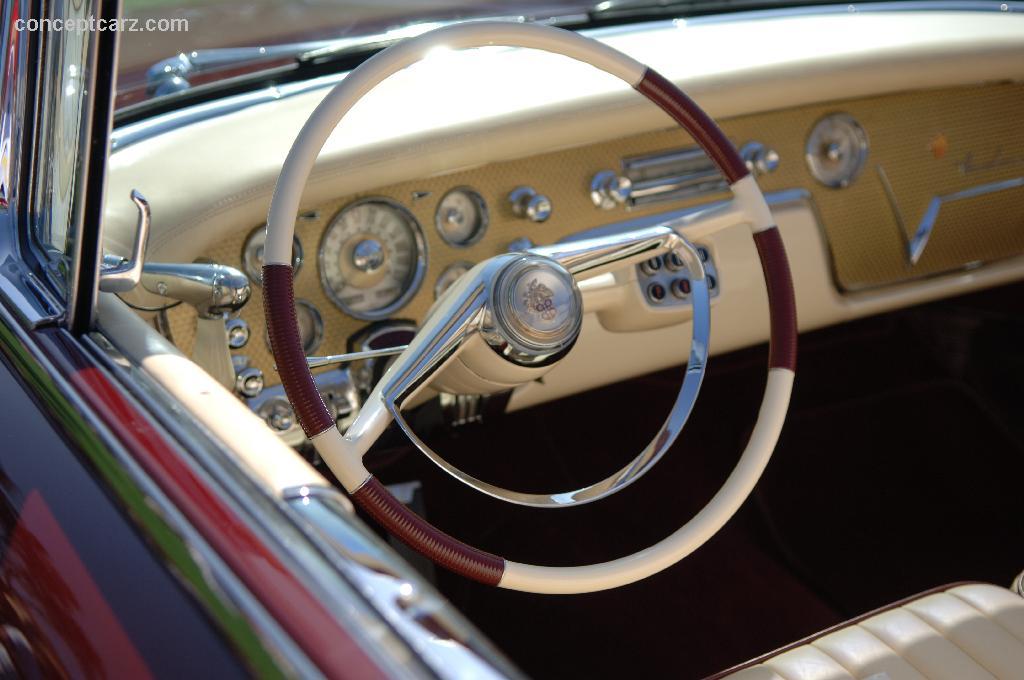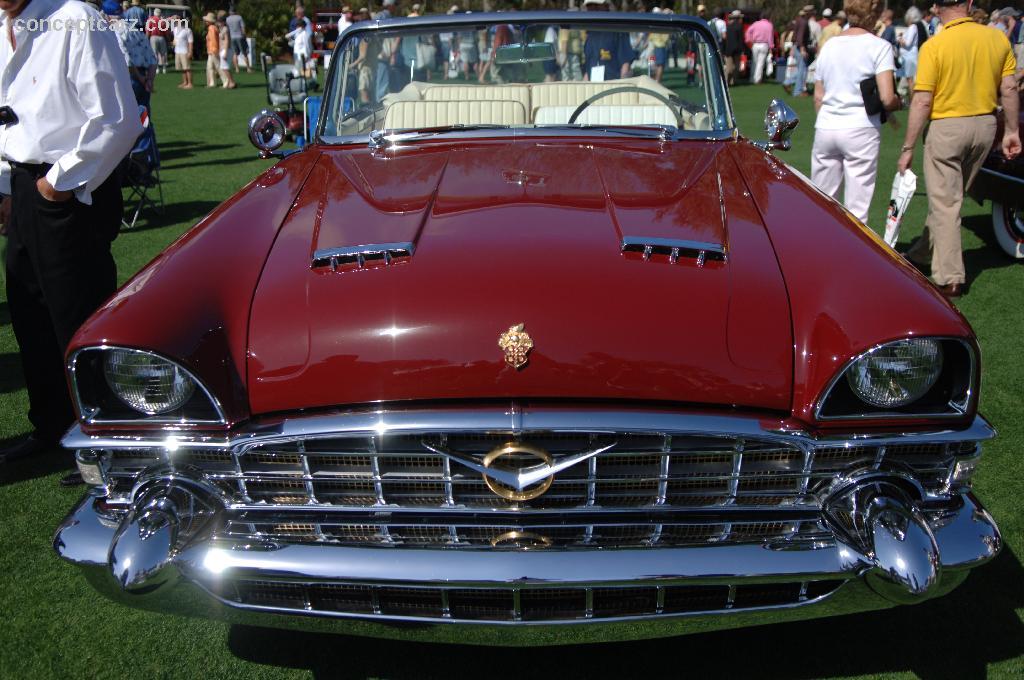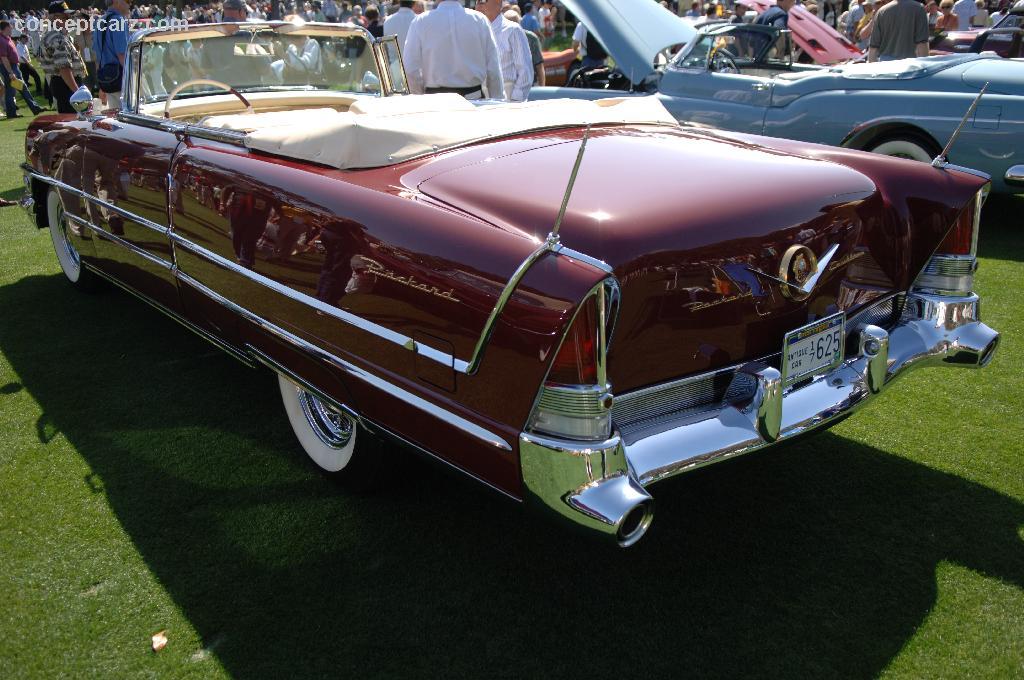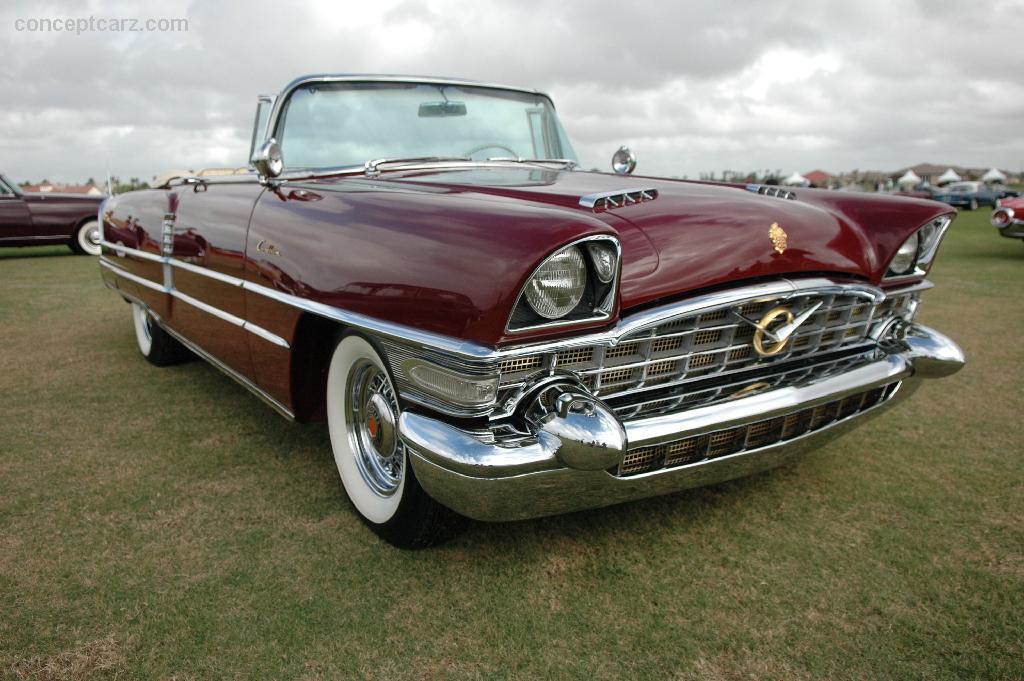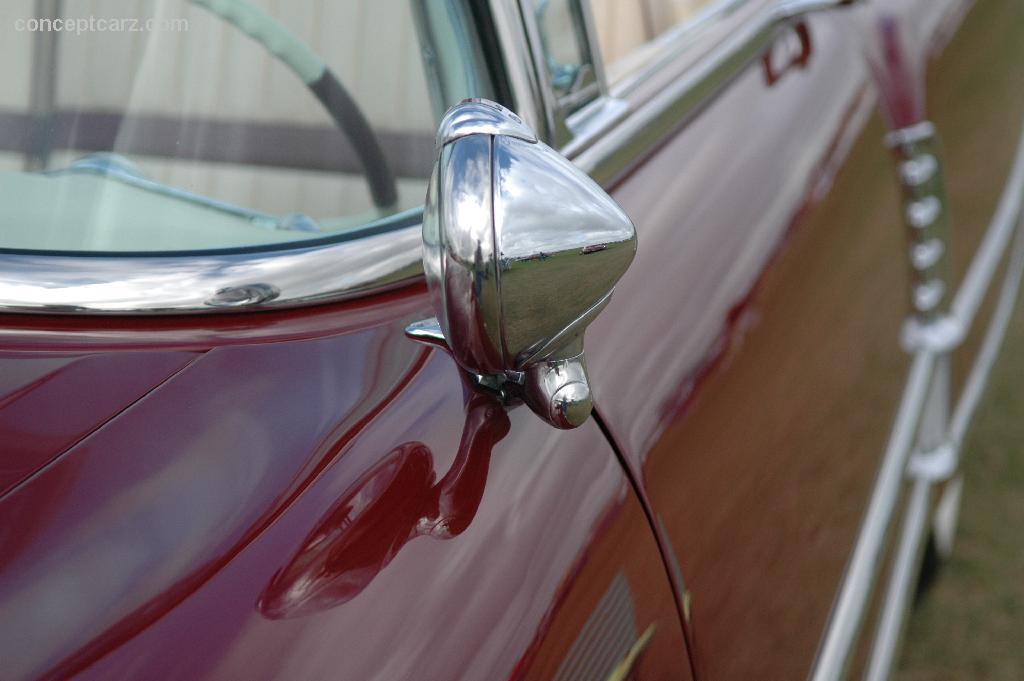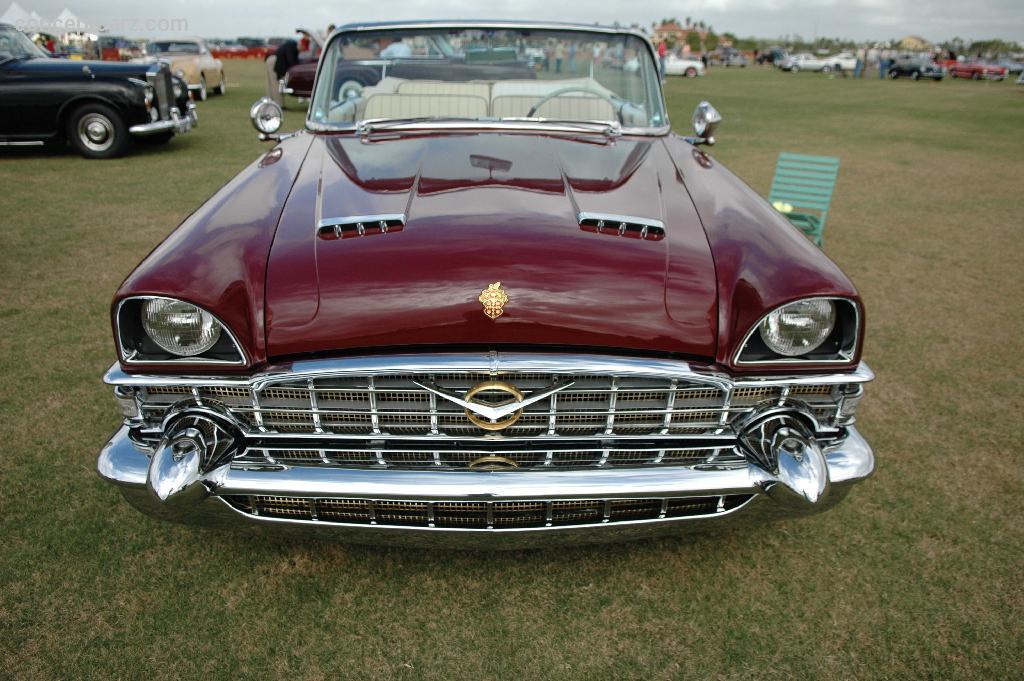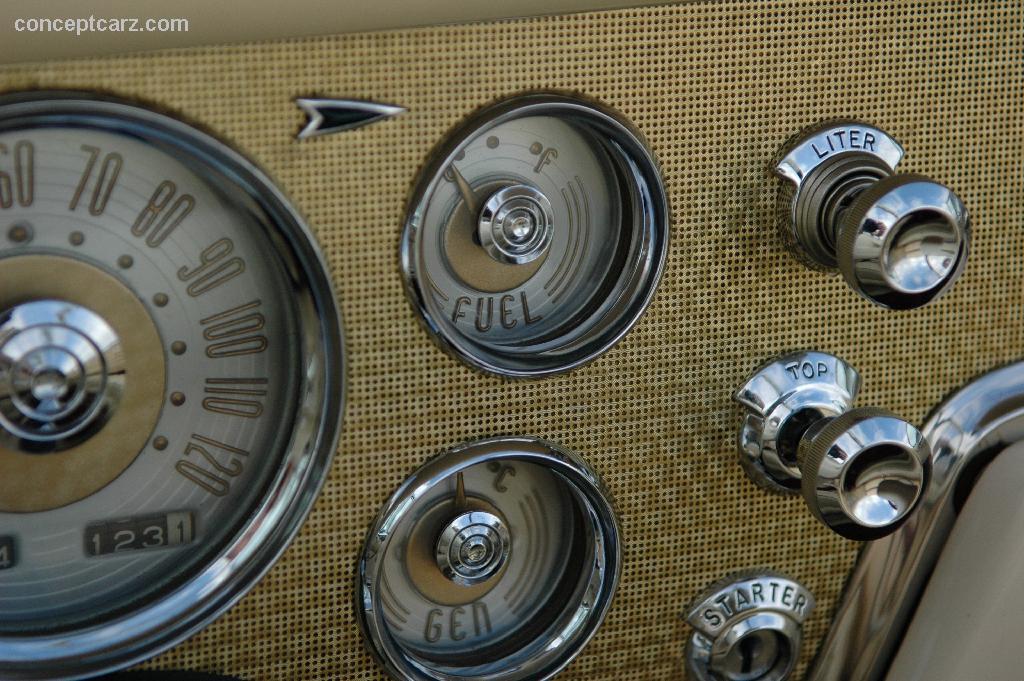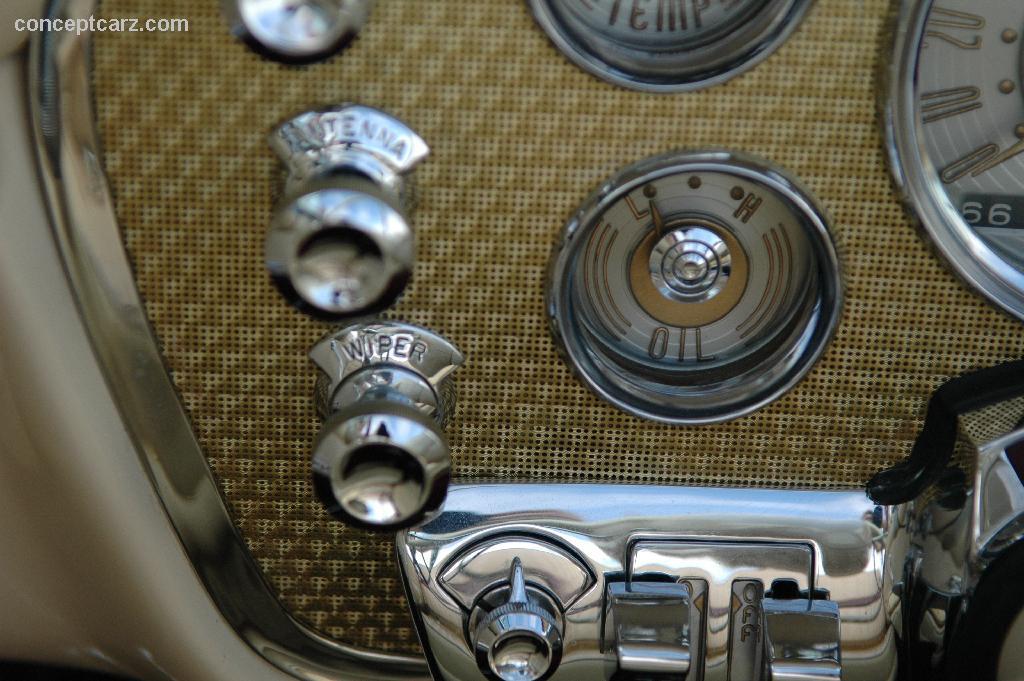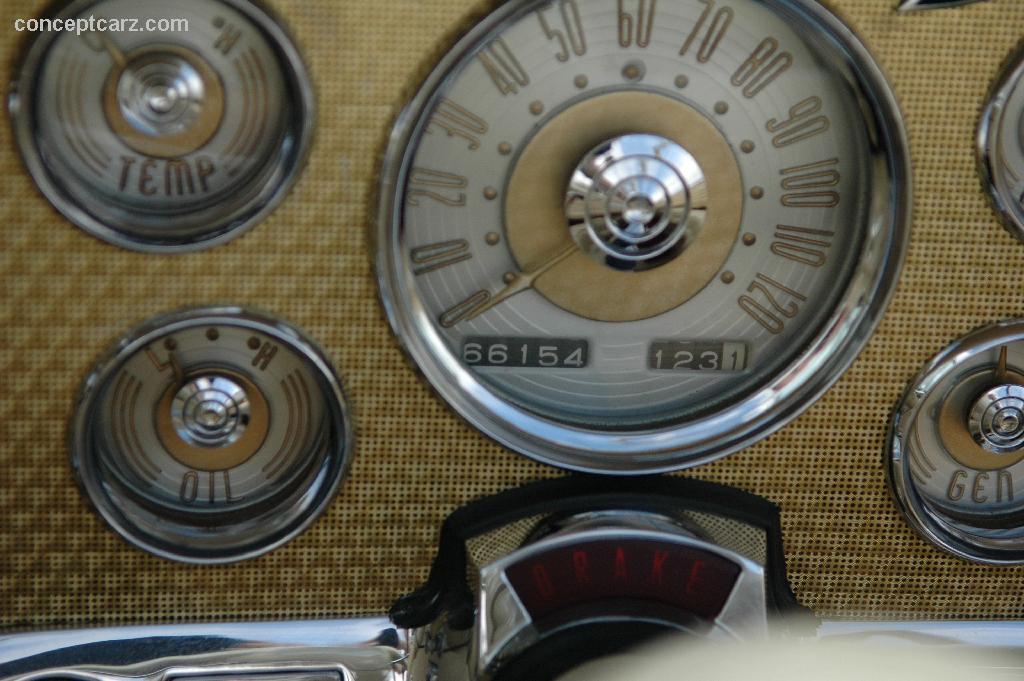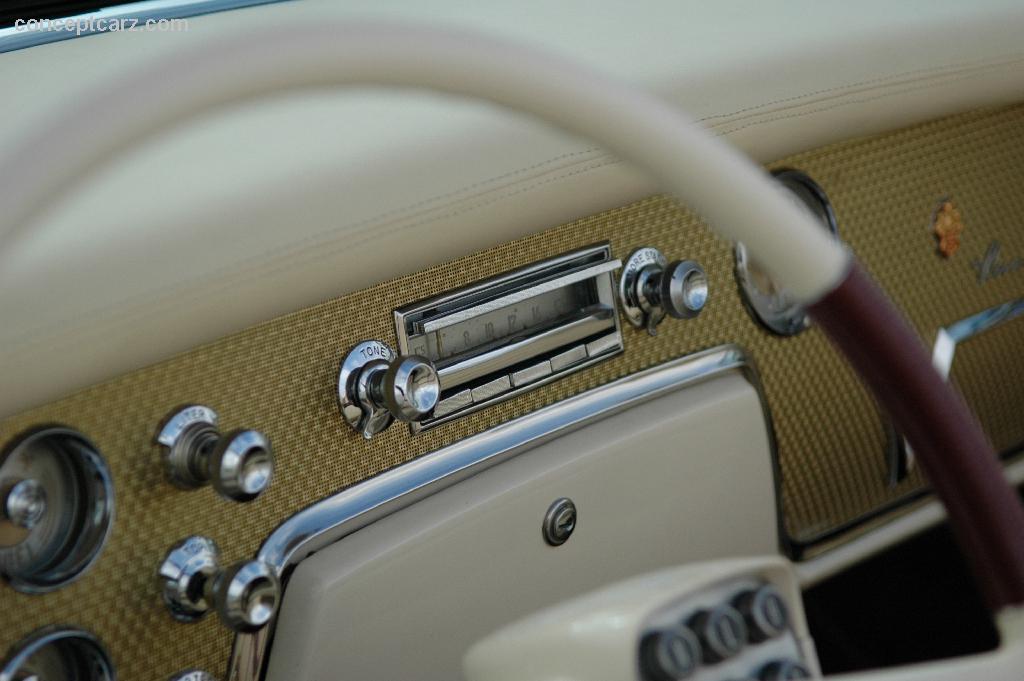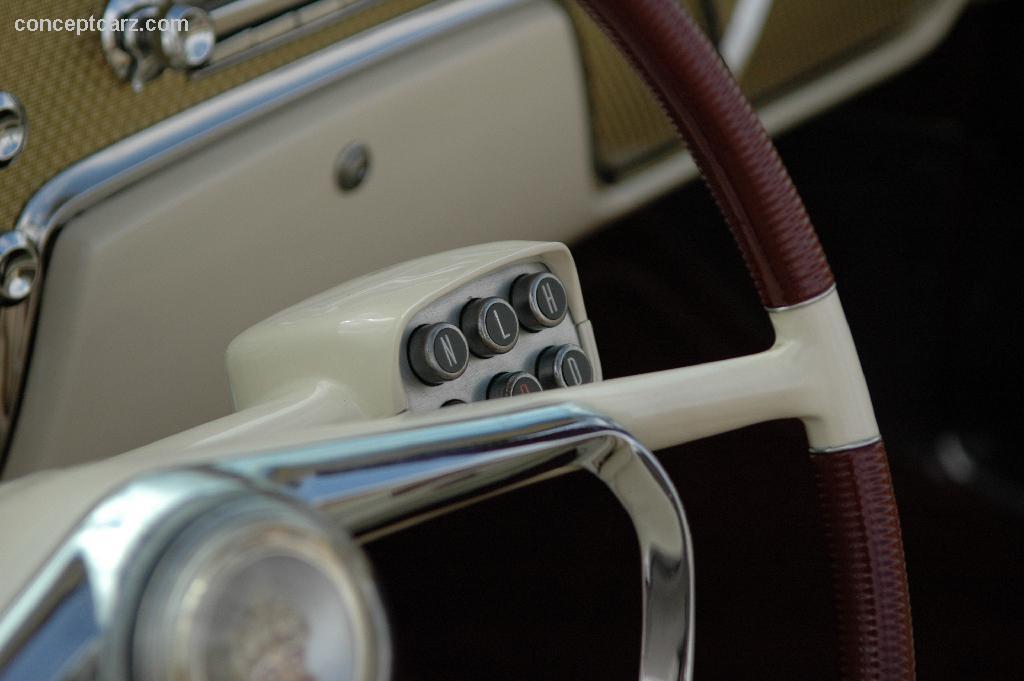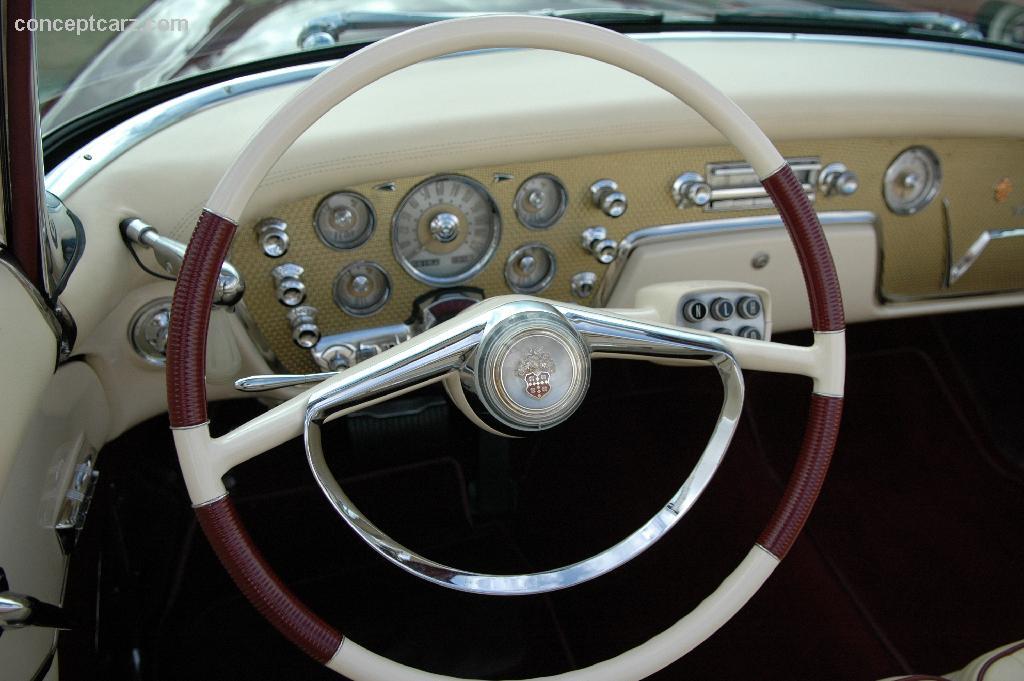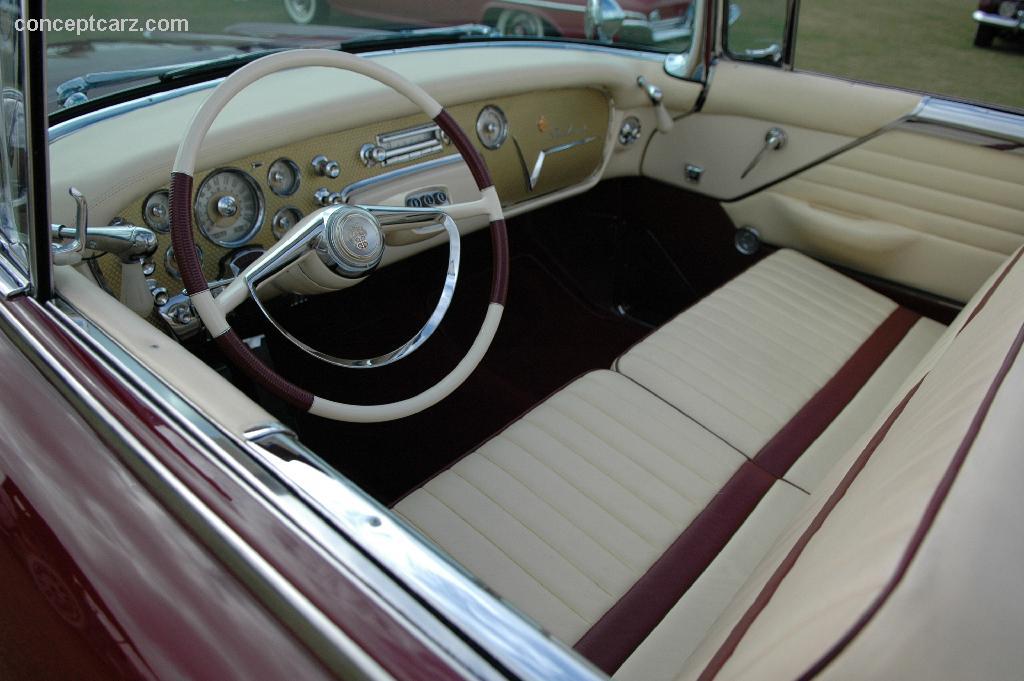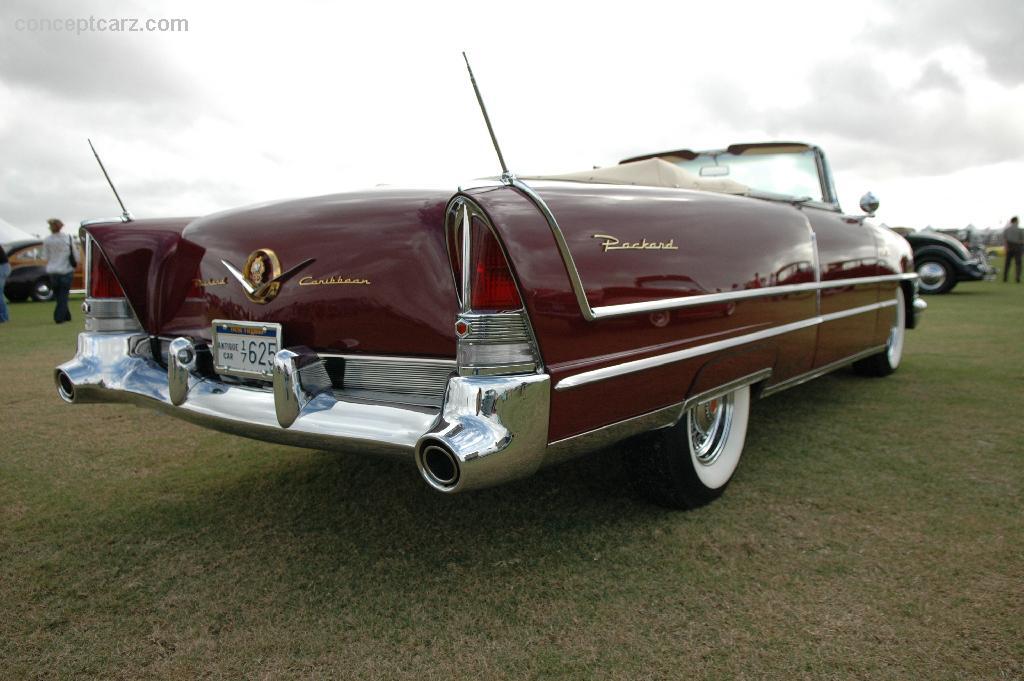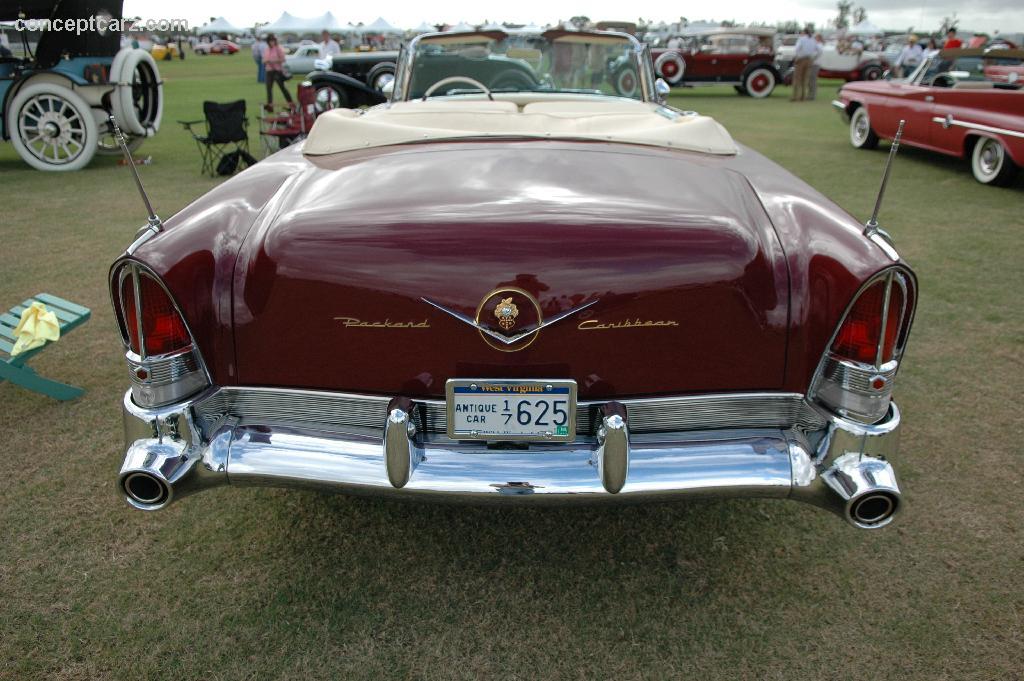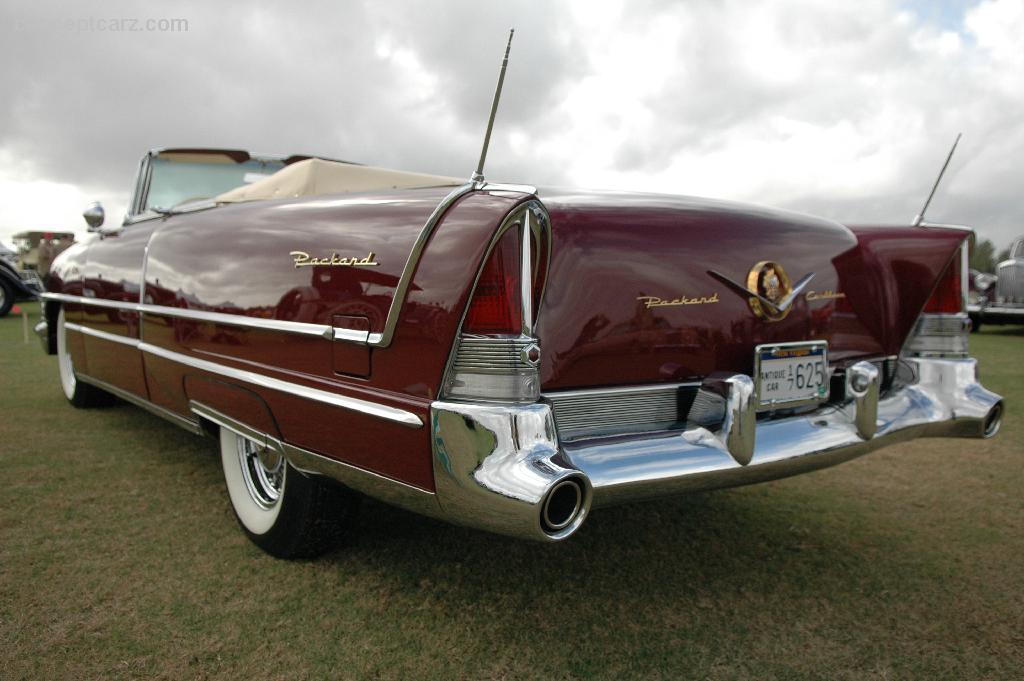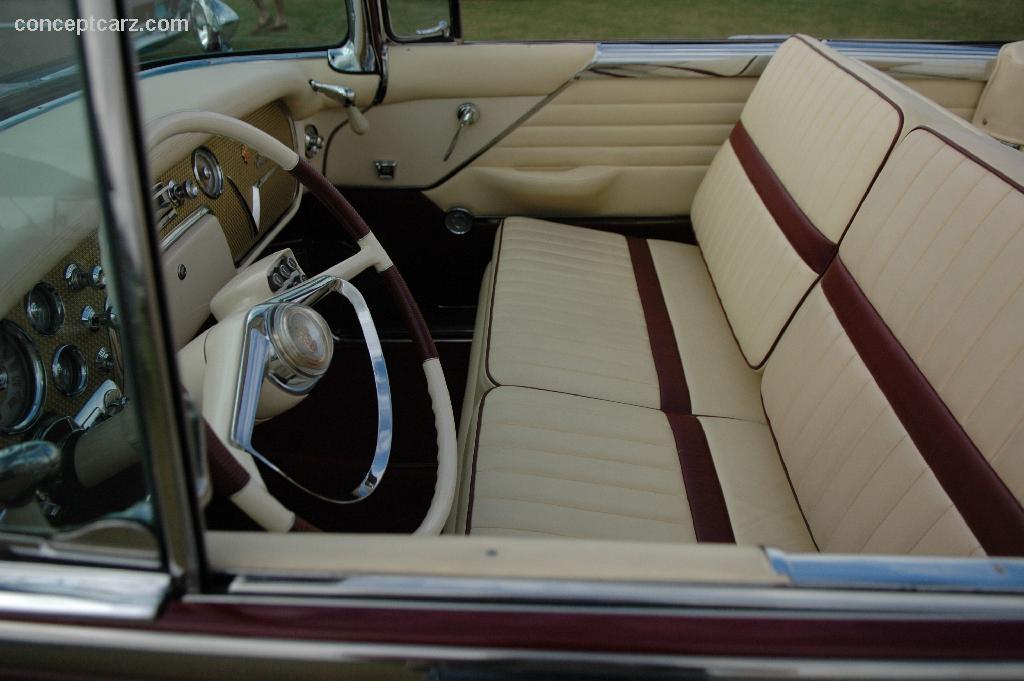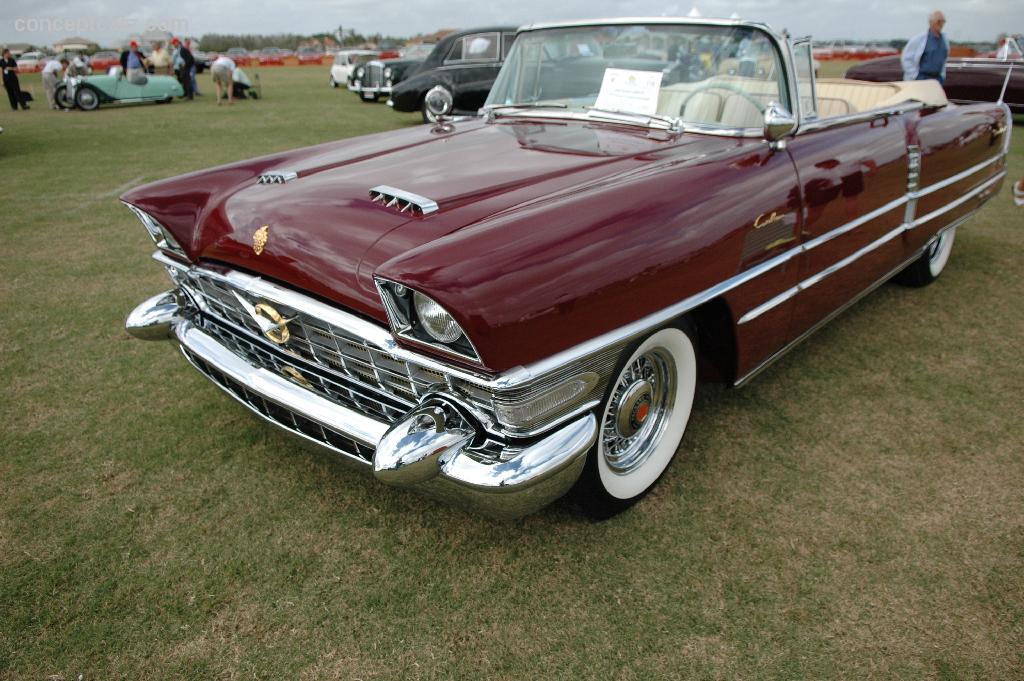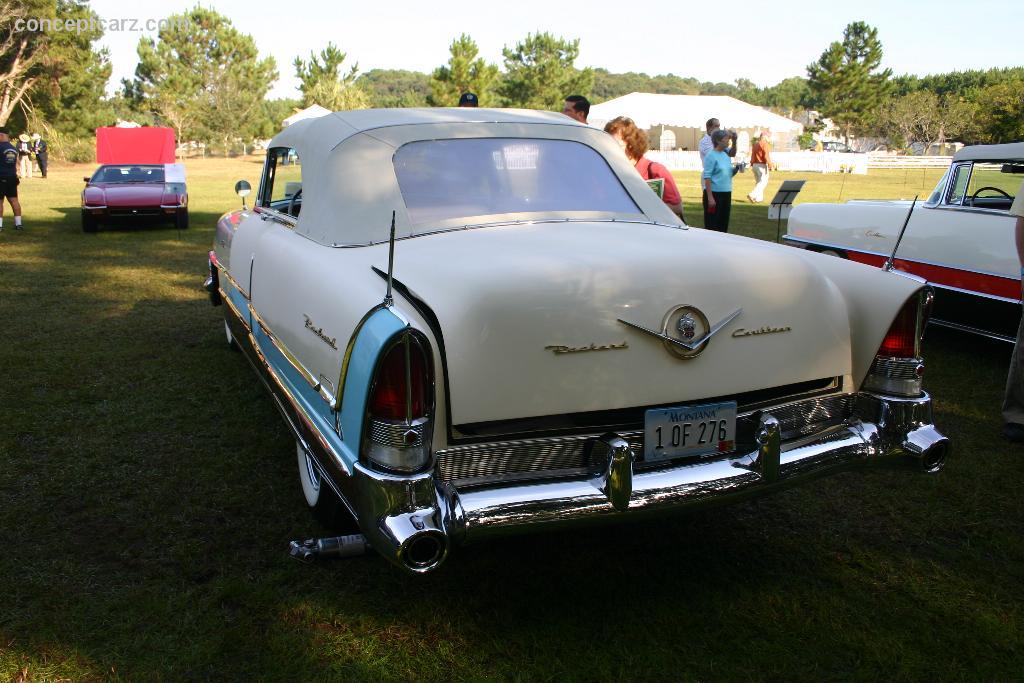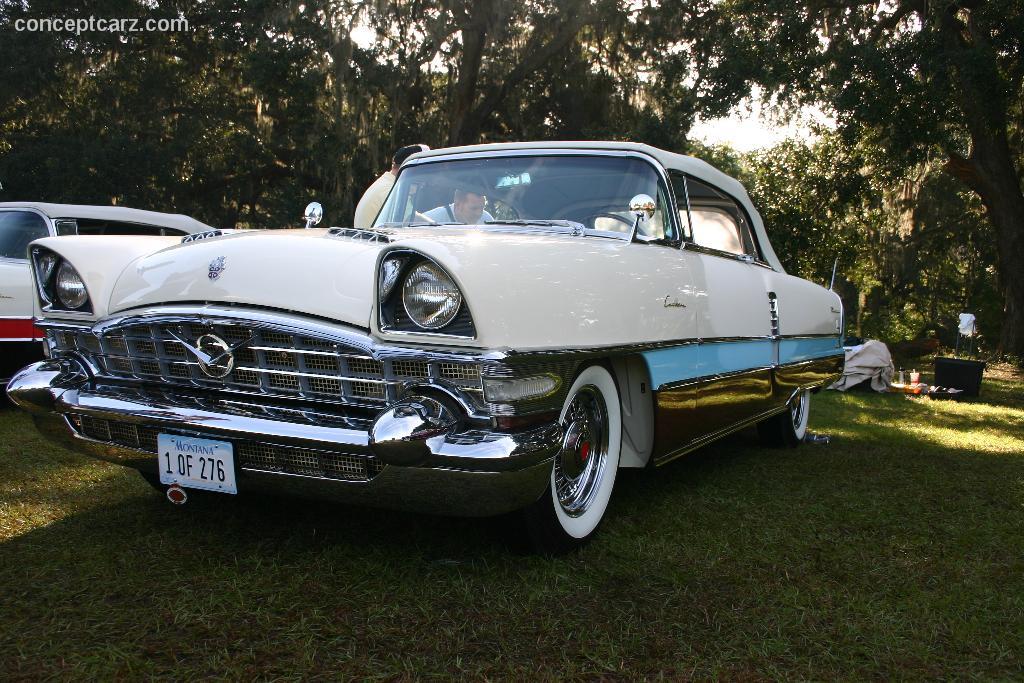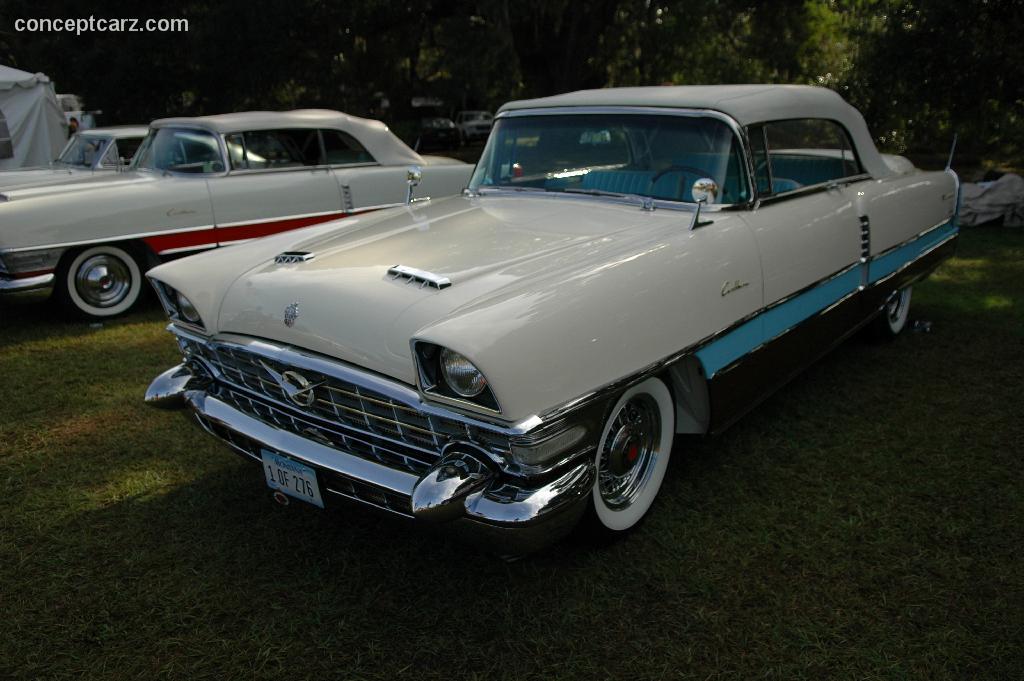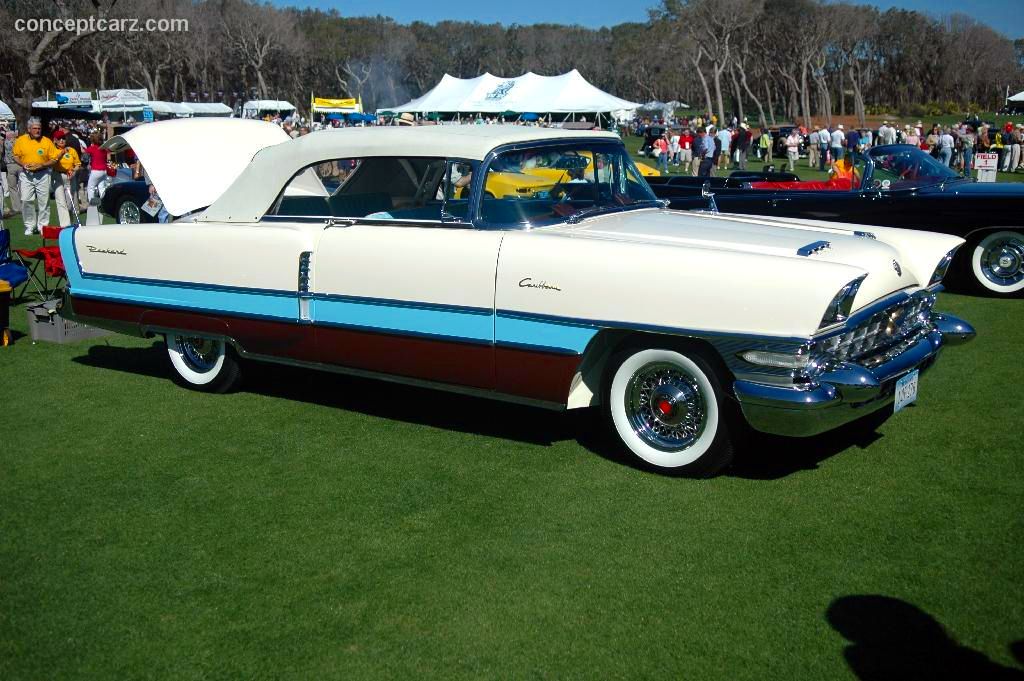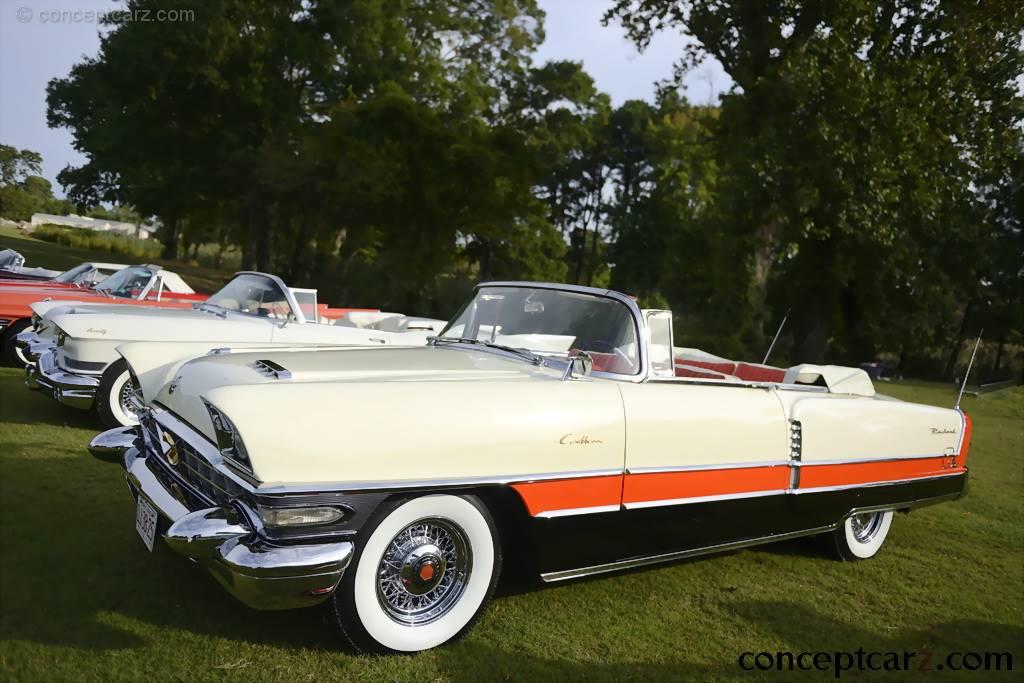Until the mid-1950s, Packard used an inline, eight-cylinder engine that was based on a 1929 design. In 1955 they became the last U.S. automaker to introduce a high-compression V-8 engine and retired the reliable and venerable inline eight. The Packard overhead-valve V8 engine was modern, conventional, and physically large. Its design was inspired by other engines of the period, including the first-generation Cadillac, Oldsmobile, and Studebaker Charles Kettering’s design features. Displacement sizes included 320- and 352 cubic inches. The engine powering the Caribbean had two four-barrel carburetors and offered 275 horsepower. In 1956, Packard introduced its 374 CID version which was used in the senior cars. The Caribbean, with its two, four-barrel carburetor arrangement, produced 310 horsepower making it the most powerful engine available in an American production car in 1956.
The engines were backed by Packard’s ‘Ultramatic’ automatic transmission with a lockup torque converter with two speeds. When the Ultramatics were introduced, they operated only in ‘high’ with ‘low’ having to be selected manually. Near the close of 1954, the transmission had been updated to operate only in ‘high’ or start in ‘low’ and automatically shift into ‘high.’
The mid-1950s Packards were among the smoothest, most comfortable, best riding, and finest handling full-size rides on the road. The William Allison invented ‘Torsion-Level’ suspension was an electronically controlled four-wheel torsion bar suspension that balanced the car’s height front-to-rear and side-to-side, having electric motors to compensate each torsion bar independently. Several contemporary American competitors unsuccessfully attempted to imitate this suspension concept by employing airbag springs. A Dana-designed ‘Twin-Traction’ limited-slip differential was introduced by Packard in 1956 and complimented the Torsion-Level suspension.
Packard introduced all-new styling for 1955 that was attractive and modern. The Caribbean was the top-of-the-line model with three-tone paint schemes, two-tone leather interiors, and an ornate dashboard and ornamentation layout. Changes for 1956 were minimal, although a hardtop coupe became available in the Caribbean for the first time. A new feature was the reversible seat cushions with two-tone leather on one side, and cloth and leather on the other.
The 1956 Packard Caribbean was the second most expensive car on the American market, with a base price of $5,995 for the convertible and $5,495 for the hardtop, making them slightly less than the Continental Mark II. The high price tag and shortened production, ending on June 25th of 1956, meant that just 276 convertibles and 263 hardtop coupes were produced. Period Packard advertisements described them as ‘the greatest Packards of them all.’
